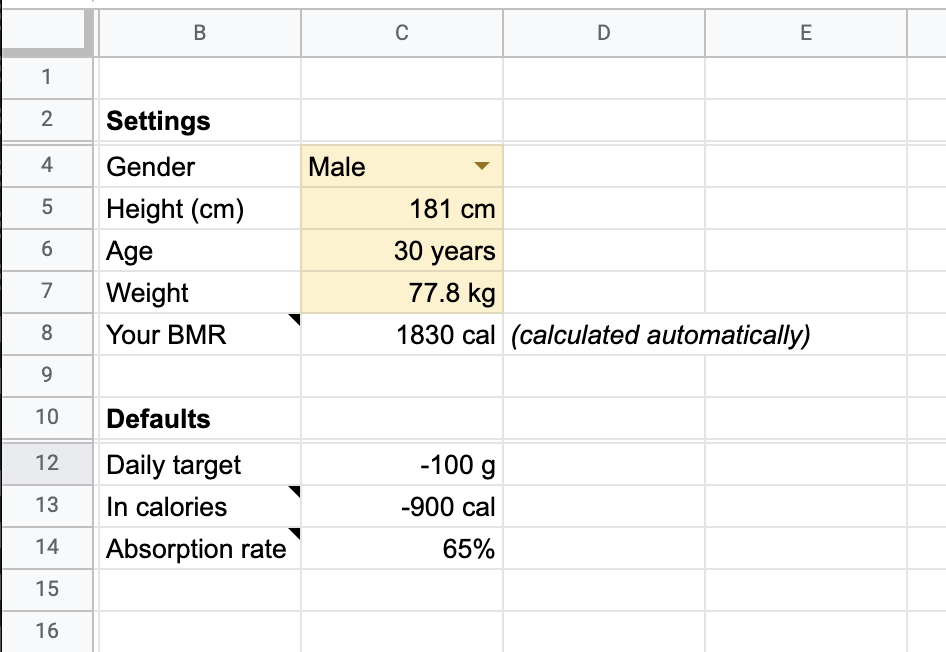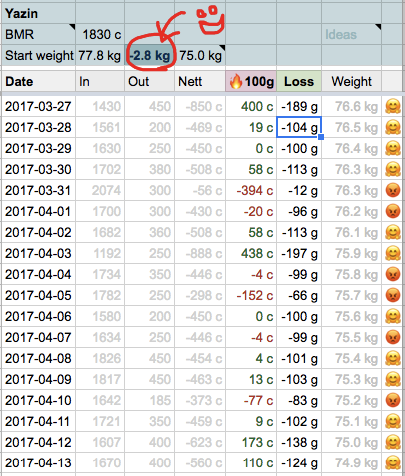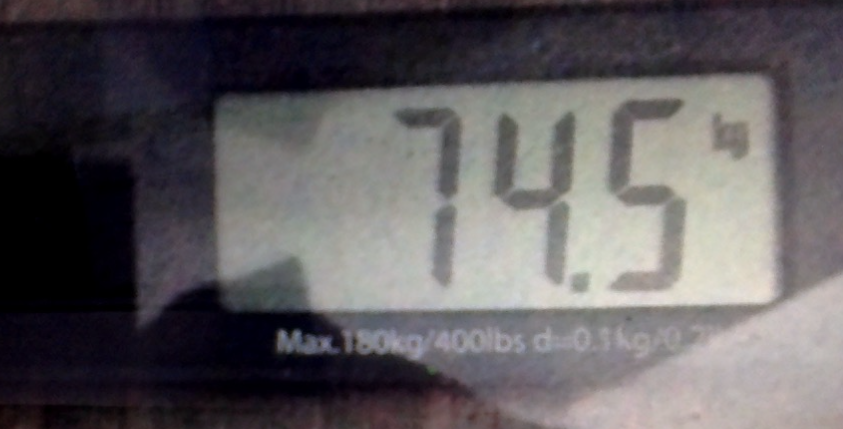Losing 100g everyday
The experiment
The world of weight loss is a very complicated one. There’s all sorts of diets, plans and routines that you’re supposed to follow — and frankly, a large element of nonsense too.
But it doesn’t have to be. I mean, let’s consider a first principles approach to weight loss. Picture the human body as a lump of energy. According to the law of conservation of energy:
the total energy of an isolated system remains constant—it is said to be conserved over time. Energy can neither be created nor destroyed; rather, it transforms from one form to another.
Our bodies are not isolated systems — we have energy coming in (when we eat/drink) and energy going out (for basic metabolism, exercise, etc.). However, if we just track both of those things, we should be able to accurately control the weight we lose / gain (since weight is energy).
The beauty of this approach, if it works, is that you can eat whatever you want. Bite the fatty backside of a bison if you like, a calorie is a calorie! Instead of focusing on the type of food, we focus on the caloric content (which is more directly influenced by the portion size).
In summary:
- Track the energy coming into your body (calories in), and the energy going out (calories out)
- Make sure more energy is going out than coming in (by at least 100g/day)
- That’s it!
Setup
First, I found my Basal Metabolic Rate (BMR). That’s how many calories I’ll burn a day even if I never get out of bed. It’s the energy my body consumes to stay alive.
To find your BMR, you can use the formula (which I got from here):
\[BMR = 88.362 + (13.397 * Weight_{kg}) + (4.799 * Height_{cm}) - (5.677 * Age)\]Mine turned out to be 1,830 calories.
Ok, so the nett calorie count for the day \(Cal_{nett}\) is:
\[Cal_{nett} = Cal_{in} - Cal_{out} - BMR\]I convert \(Cal_{nett}\) into grams by dividing by 9, since 1g of fat is equivalent to 9 calories. That tells me how much weight I lost on a particular day.
Note that this does assume that your body absorbs 100% of the calories you eat, which is not true. The calories you eat represent a ceiling — but a good chunk of the food you eat doesn’t get absorbed, and well - passes right through!
Assuming an absorption ratio of 65% (or 0.65):
\[Cal_{nett} = Cal_{in} * 0.65 - Cal_{out} - BMR\]And, the math lesson is over 😄
I created a Google Sheet to calculate all this automatically:

And to make this all easier to track, I also setup a Google Form which I used to fill in the calories I consume/use every day:
![]()
(You can download both the Sheet & Form below)
Everytime I eat something (or do some exercise), I log it in … and the sheet is updated automatically. At the end of the day, I throttle my calorie consumption to ensure that there’s always a net loss of 100g or so of body weight.
Rules
- Log all incoming and outgoing energy
- Stop eating once you’ve hit a 100g deficit for a particular day
Update: 1 month
Wow, this experiment has worked better than I could’ve ever imagined! Checkout the results below:

The expected weight is 75.0kg as of today, but my actual weight (when I first wake up in the morning) is 74.5kg!

That’s insane — it means I’m actually losing more than 100g each day, since I’ve lost 3.3kg to date (in just 30 days).
I’m going to keep this experiment going for another month or so until I hit the 70kg range, which I think would be ideal. I’ll make sure to share more details around the specifics of how I accomplished this, and tips you can use to do the same once I’ve got a firm grip of things (say in a month or so).
Now, you can do this too!
Because I’m such a great guy, I’m sharing the Google Form & Google Sheet templates that I used to track my progress:
To use this yourself:
- Copy the Form and Sheet to your own Google Drive folder
- Update the Settings in the “⚙️” sheet to include your own details
- Start tracking calories, and observe your progress in the “Summary” sheet!
If you found this useful, let me know!
